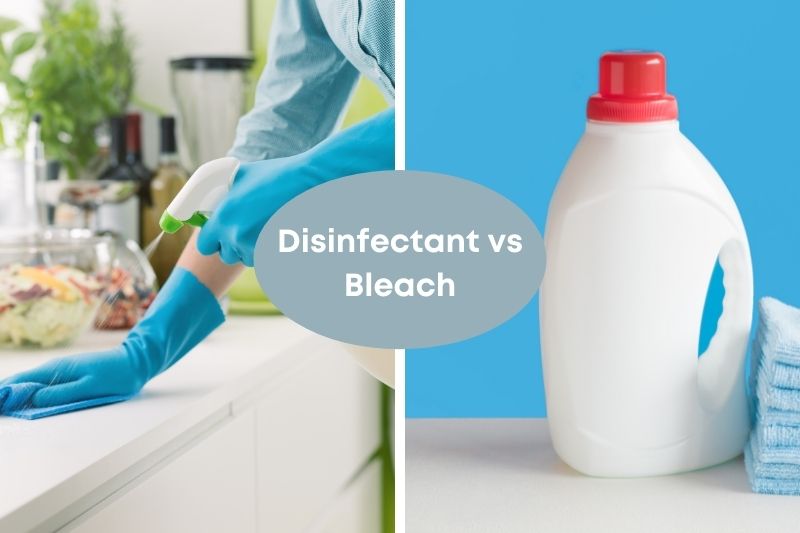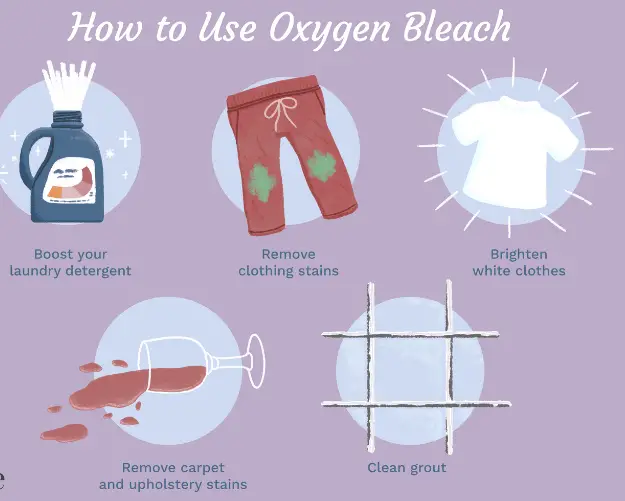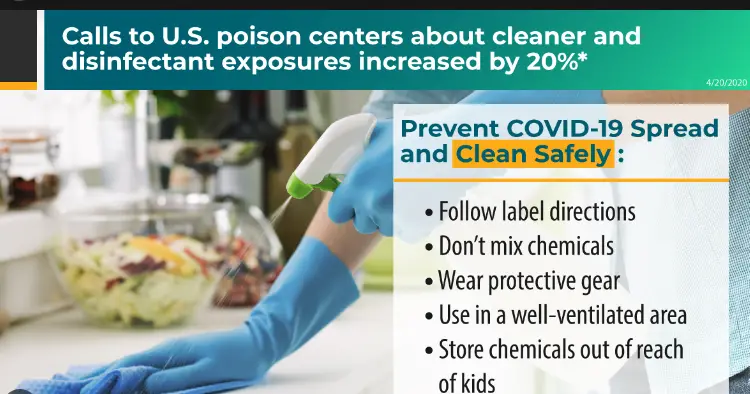In the realm of cleanliness and hygiene, the terms bleach and disinfectant are often used interchangeably, yet they serve distinct roles in maintaining our environments germ-free. Each agent has unique properties and uses that make it suitable for specific tasks, whether at home, in hospitals, or in public spaces. Understanding their differences can empower users to make informed choices in their cleaning routines.
Bleach is a potent chemical that kills bacteria, viruses, and fungi by breaking down their cell walls, primarily used for heavy-duty cleaning and stain removal. Disinfectants, on the other hand, may contain a variety of chemicals designed to kill or deactivate pathogens on surfaces, making them ideal for routine cleaning in areas like kitchens and bathrooms. The key difference lies in their chemical makeup and the scope of their germicidal activities.
While both are effective in reducing the spread of infectious diseases, the choice between bleach and disinfectant depends on the nature of the area to be cleaned and the types of microbes targeted. It is crucial to consider factors such as the presence of organic matter, surface compatibility, and desired contact time.

Definitions and Basics
Understanding the fundamental differences between bleach and disinfectants is crucial for effectively using them in cleaning practices. Both play important roles in infection control, but their applications and effectiveness vary depending on the situation.
What is Bleach?
Bleach, commonly known as chlorine bleach, is primarily composed of sodium hypochlorite. This compound is renowned for its potent oxidizing properties, making it extremely effective at breaking down proteins, lipids, and DNA of microorganisms. In household contexts, bleach is often used in a diluted form to balance its efficacy with safety considerations.
What is Disinfectant?
Disinfectants are agents that eliminate microorganisms and prevent their growth on surfaces. Unlike bleach, disinfectants encompass a broader range of chemical compositions, each tailored to target specific types or groups of pathogens. These products are used extensively in healthcare settings, homes, and public spaces to maintain a high level of hygiene.

Chemical Composition
The chemical makeup of bleach and disinfectants determines their applicability and safety in various environments.
Ingredients in Bleach
The primary ingredient in household bleach is 5-6% sodium hypochlorite, dissolved in water. It may also contain small amounts of stabilizers or additives that enhance its shelf life and effectiveness. The simplicity of its composition makes bleach a powerful and straightforward choice for heavy-duty cleaning tasks.
Ingredients in Disinfectants
Disinfectants can contain a variety of active ingredients, including alcohols, phenols, quaternary ammonium compounds, and hydrogen peroxide. Each ingredient has distinct advantages and mechanisms of action, making some disinfectants more suitable for certain environments than others.
Mechanism of Action
The way bleach and disinfectants work at the molecular level plays a key role in their effectiveness as cleaning agents.
How Bleach Works
Bleach acts by oxidizing the molecules in the cells of microorganisms. This reaction leads to the rupture of cell walls and subsequent death of the pathogens. Due to its aggressive mode of action, bleach is especially useful for removing stubborn stains and disinfecting areas that have been exposed to high levels of contaminants.
How Disinfectants Work
Disinfectants kill or deactivate microorganisms through various mechanisms, depending on their chemical structure. For example:
- Alcohols cause dehydration and denaturation of proteins.
- Quaternary ammonium compounds disrupt cell membranes and deactivate enzymes.
- Hydrogen peroxide works by producing free radicals that damage cellular components.
Usage Scenarios
Choosing when to use bleach or a disinfectant depends on several factors, including the nature of the surface, the type of microorganisms involved, and health and safety considerations.
When to Use Bleach
- Heavy Stain Removal: Ideal for whitening and removing tough stains from surfaces.
- Water Purification: Used in emergency situations to make water safe for drinking.
- Mold Elimination: Effective in controlling mold on hard surfaces, especially in damp areas.
When to Use Disinfectant
- Routine Cleaning: Perfect for daily cleaning of surfaces that don’t have stubborn stains but need to be germ-free.
- Sensitive Areas: Preferred in settings like hospitals and kitchens, where bleach’s corrosiveness might be a concern.
- Electronics and Soft Surfaces: Many disinfectants are safe on electronics and fabrics, unlike bleach.

Efficacy Against Pathogens
Understanding the effectiveness of bleach and disinfectants against various pathogens is crucial for using them effectively in different environments.
Bleach Effectiveness
Bleach is highly effective against a wide range of bacteria, viruses, and fungi. Its strong oxidizing properties make it capable of destroying the cell walls of microorganisms, leading to rapid disinfection. Key points include:
- Viruses: Particularly effective against enveloped viruses like influenza and coronaviruses due to its ability to disrupt lipid membranes.
- Bacteria: Kills both gram-positive and gram-negative bacteria, making it a versatile option for sanitizing surfaces.
- Spores and Fungi: While bleach is effective against many fungi, its effectiveness can vary with spores, requiring higher concentrations or longer contact times.
Disinfectant Effectiveness
The effectiveness of disinfectants varies based on their active ingredients and the pathogens they are formulated to target. Some common findings are:
- Broad Spectrum: Many disinfectants are labeled as broad-spectrum, capable of eliminating a wide range of microorganisms.
- Specific Targets: Some disinfectants are specifically designed to target harder-to-kill pathogens, such as tuberculosis or norovirus.
- Contact Time: The efficacy often depends on the contact time, with longer exposure generally resulting in better disinfection.
Safety and Precautions
Using these powerful cleaning agents safely is paramount to prevent harm to humans and surfaces.
Safety with Bleach
While bleach is an effective disinfectant, it must be used with caution due to its corrosive nature:
- Ventilation: Always use bleach in well-ventilated areas to avoid inhalation of fumes.
- Personal Protective Equipment: Wear gloves and, if possible, eye protection when handling bleach.
- Dilution: Follow the recommended dilution guidelines to minimize surface damage and respiratory risks.
Safety with Disinfectants
Disinfectants vary in their safety profiles, but general precautions should include:
- Product Instructions: Always read and follow the manufacturer’s instructions for safe and effective use.
- Chemical Sensitivity: Be aware of any personal or occupant sensitivities to the ingredients used in the disinfectant.
- Proper Storage: Store disinfectants away from children and pets to prevent accidental ingestion.
Environmental Impact
The environmental implications of using these substances are significant and should be considered in their overall assessment.
Bleach and the Environment
The use of bleach can have several environmental drawbacks:
- Toxicity to Aquatic Life: Bleach can be toxic to fish and other wildlife if it enters waterways.
- Breakdown Products: Chemicals in bleach can react to form dioxins and other harmful organic compounds.
- Bioaccumulation: Persistent in the environment, these compounds can accumulate in the food chain.
Disinfectants and the Environment
Like bleach, disinfectants can also impact the environment:
- Chemical Runoff: Can lead to pollution if not disposed of properly.
- Resistance Development: Overuse can contribute to the development of resistant strains of microorganisms.
- Toxicity: Some disinfectants can harm wildlife and disrupt ecosystems if they enter the natural environment.
Application Techniques
Proper application is key to maximizing the efficacy of bleach and disinfectants while minimizing risks.
Applying Bleach Correctly
Using bleach effectively involves several steps:
- Surface Compatibility: Ensure the surface is compatible with bleach to avoid damage.
- Proper Mixing: Mix with water as recommended—usually a 1:10 ratio for general disinfection.
- Application: Apply evenly and allow sufficient contact time before rinsing if required.
Applying Disinfectants Correctly
To use disinfectants effectively:
- Read Labels: Understand the specific applications and limitations of the product.
- Complete Coverage: Ensure the disinfectant covers all surfaces to be treated.
- Follow Contact Times: Allow the disinfectant to remain on the surface for the full duration recommended by the manufacturer.
Common Myths
Dispelling common myths can help users better understand how to use these products effectively.
Bleach Misunderstandings
- Strength Over Time: Bleach can lose its effectiveness over time, especially once opened.
- Mixing with Other Cleaners: Bleach should never be mixed with ammonia or vinegar due to the toxic gases released.
Disinfectant Misunderstandings
- Immediate Effectiveness: Disinfectants require a certain amount of contact time to be effective, contrary to the belief that they work instantly.
- Use on All Surfaces: Some disinfectants can corrode or damage sensitive surfaces.
Industry Recommendations
What professionals and regulatory agencies say can guide best practices for using bleach and disinfectants.
What Experts Say About Bleach
Experts recommend using bleach in high-risk contamination areas but advise caution regarding its corrosive nature and the potential for toxic byproducts.
What Experts Say About Disinfectants
Professionals often prefer specific disinfectants for particular pathogens or settings, highlighting the importance of choosing the right product for the right context.
FAQs
Can I mix bleach with other cleaners?
Mixing bleach with other cleaning agents, especially ammonia or acids, can release toxic gases such as chloramine vapors, which can cause severe respiratory issues and other health problems. Always use bleach exclusively and follow safety guidelines closely.
Is bleach a disinfectant or sanitizer?
Bleach can function as both a disinfectant and sanitizer, depending on its concentration and the contact time with surfaces. As a disinfectant, it kills a wide range of pathogens, and when diluted, it can safely sanitize surfaces by reducing the number of bacteria to safe levels.
What surfaces should not be cleaned with bleach?
Bleach should not be used on porous surfaces such as wood, fabric, or certain plastics, as it can damage these materials. It can also cause discoloration and weaken fibers, so it’s important to check the suitability of bleach for specific surfaces before use.
How often should I use disinfectants at home?
Disinfectants should be used regularly in areas that foster bacterial growth, such as bathrooms and kitchens, or in high-touch areas like doorknobs and light switches. During flu season or outbreaks, increasing the frequency can help mitigate the spread of infections.
Do disinfectants work instantly on surfaces?
Most disinfectants require a certain amount of contact time on surfaces to be effective, typically between 5 to 10 minutes. This allows the chemical solution enough time to penetrate and kill the pathogens present on surfaces.
Conclusion
In sum, while both bleach and disinfectants are critical in our fight against germs, they are not created equal and should be chosen with care depending on the cleaning needs and specific circumstances. Knowing when and where to use each can maximize hygiene effectiveness and ensure safety in our living and working environments.
As we continue to navigate through various health challenges, empowering ourselves with the right knowledge about these cleaning agents can significantly enhance our ability to maintain safe and healthy spaces. By making informed decisions about using bleach and disinfectants, we contribute to the overall health and well-being of our communities.
